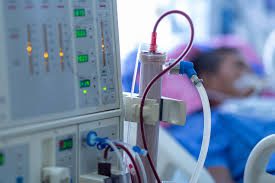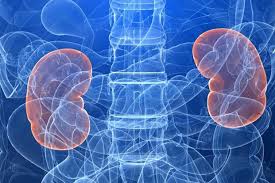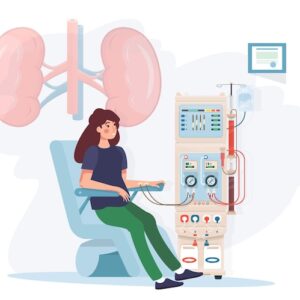For millions around the globe, the diagnosis of end-stage renal disease (ESRD) is a turning point. It’s not just a medical condition — it’s a life-defining moment that forces patients and their families to face one critical, life-changing question:
Dialysis or kidney transplant?
This choice, though deeply personal, is shaped by science, accessibility, culture, and emotion. In this in-depth report, we explore what it means to live on dialysis versus opting for a transplant, hear from real patients navigating this path, and unpack the medical, social, and ethical implications of both options.
Kidney Transplant or Dialysis?
🚨 A Silent Crisis: The Rise of Kidney Disease
Chronic kidney disease (CKD) is on the rise worldwide. According to the World Health Organization (WHO), over 850 million people are currently affected. Of these, millions progress to end-stage renal disease, where the kidneys function at less than 10% of their normal capacity.
This means the body can no longer remove waste, balance fluids, or regulate blood pressure without intervention and needs organ transplant in Iran.
“When the kidneys fail,” says Dr. Shirin Vaziri, a nephrologist based in Dubai, “the body slowly fills with toxins. Patients may not feel it at first, but soon the effects are debilitating — fatigue, confusion, swelling, and in many cases, death, unless something is done.”
And so, the fork in the road emerges: dialysis or transplant?
⏳ Dialysis: Life on a Machine
Dialysis is the most immediate and widely available solution. In essence, it performs the job the kidneys no longer can.
There are two main types:
- Hemodialysis: Blood is filtered through a machine, typically at a clinic, three times a week for 3–۵ hours.
- Peritoneal dialysis: A catheter is inserted into the abdomen, allowing fluid to absorb waste internally, often done at home daily.
While dialysis is life-sustaining, it comes at a cost — not just financially, but emotionally and physically.
📉 The Hidden Toll of Dialysis
While dialysis keeps patients alive, studies show that long-term survival is limited. According to the United States Renal Data System (USRDS), the 5-year survival rate on dialysis is approximately 35%, while that of a renal transplant in Iran is around 80%.
Moreover, dialysis often leads to other health complications:
- Cardiovascular disease (the leading cause of death in dialysis patients)
- Infections
- Low quality of life
- Depression and isolation
🧬 Kidney Transplant: A Second Chance
A kidney transplant replaces the failing organ with a healthy one from either a deceased donor or a living donor. The surgery typically takes 3–۴ hours, and most patients remain hospitalized for about a week afterward.
For those who qualify and receive a transplant, the benefits are often transformative:
- Better life expectancy
- Freedom from dialysis
- Improved energy levels
- Greater dietary and lifestyle flexibility
- Restored sense of normalcy
💊 The Commitment After the Surgery
A transplant is not a cure — it’s a treatment with lifelong commitment. Recipients must take immunosuppressive medication daily to prevent the body from rejecting the new kidney. These drugs come with side effects such as:
- Increased risk of infections
- Higher likelihood of certain cancers
- Potential metabolic issues
Still, most patients find the trade-off worth it. “I’d rather take pills for the rest of my life than spend it hooked to a machine,” says Mehran.
🔄 The Numbers Game: Supply vs. Demand
Here lies one of the biggest barriers to transplants: the shortage of kidneys.
Globally, only a fraction of those who need a kidney ever receive one. According to the Global Observatory on Donation and Transplantation, over 2 million people need a transplant annually — but less than 10% receive it.
In countries like India, Egypt, and Iran, long waiting lists are the norm. Cultural hesitations around deceased donation and limited access to transplant centers exacerbate the problem. Medipars has informed you completely about this procedure.
🇮🇷 A Unique Model: Iran’s Approach to Living Donation
Interestingly, Iran is the only country in the world that has legalized compensated kidney donation. While controversial, this system has virtually eliminated the transplant waiting list.
Donors receive a fixed compensation from the government and sometimes additional support from charities. Critics argue this system risks exploiting the poor; advocates claim it saves lives and creates equity.
Regardless of the stance, Iran’s model opens important discussions around ethical organ donation frameworks.
💸 The Financial Equation
In many parts of the world, dialysis is more expensive long-term than a transplant.
For example:
- Dialysis may cost $50,000–$۸۰,۰۰۰ per year per patient.
- Transplant surgery has a one-time cost of $100,000–$۱۵۰,۰۰۰, followed by $10,000–$۱۵,۰۰۰ annually in medications.
From a policy perspective, investing in transplantation makes economic sense. Yet in low- and middle-income countries, limited infrastructure and lack of transplant programs keep dialysis as the primary solution.
In the words of health economist Dr. Sana Mahmoud, “It’s not just about cost — it’s about systems. Transplants require surgical teams, follow-up clinics, registries. Many governments aren’t ready for that investment.”
🧠 The Psychological Divide
The psychological experience of patients on dialysis vs. transplant recipients is stark.
Dialysis often leads to:
- Depression
- Anxiety
- Social withdrawal
- Loss of independence
In contrast, transplant recipients frequently report:
- Renewed self-confidence
- Return to employment
- Improved relationships
- Greater emotional stability
- The Psychological Divide
🧭 Navigating the Choice: What Should Patients Consider?
While transplant is often preferred medically and emotionally, it isn’t for everyone. Factors to consider include:
✅ Suitable for Transplant:
- Patient is in good overall health
- No major infections or active cancers
- Psychological readiness
- Availability of donor
❌ Not Suitable (for now):
- Uncontrolled diabetes or heart failure
- Active drug/alcohol abuse
- Advanced age or multiple comorbidities
🌱 Building Toward a Better Future
The choice between dialysis and transplant is deeply personal — but one that can be better informed by access, education, and policy reform.
To improve outcomes globally:
- Public education on organ donation is essential.
- Investment in transplant infrastructure must increase.
- Support for living donors — including paid leave and medical follow-up — can encourage donations.
- Global registries and international cooperation can help match organs more efficiently.
- Building Toward a Better Future

❤️ Real Lives, Real Impact
Back in Mashhad, Fatemeh is still waiting for a kidney. Her daughter has volunteered to donate, but they’re not a match. She’s now on the national registry, hoping for a miracle.
“Every time the phone rings,” she says, “my heart skips. Maybe today is the day.”
Meanwhile, Mehran, now three years post-transplant, is mentoring other patients and advocating for organ donation awareness. “I want people to see what’s possible,” he says. “A kidney changed everything for me. It could for them too.”
Final Word: A Choice Between Existence and Living
Dialysis and transplant are both lifelines. But one sustains life; the other restores it. While dialysis may keep the body going, transplant has the power to give patients their lives back — full, free, and hopeful.
The challenge now lies not in medicine, but in systems and society: how do we make that choice more available, more ethical, and more informed?
Because for millions still waiting, this isn’t a medical debate — it’s the decision that defines their future.
source


